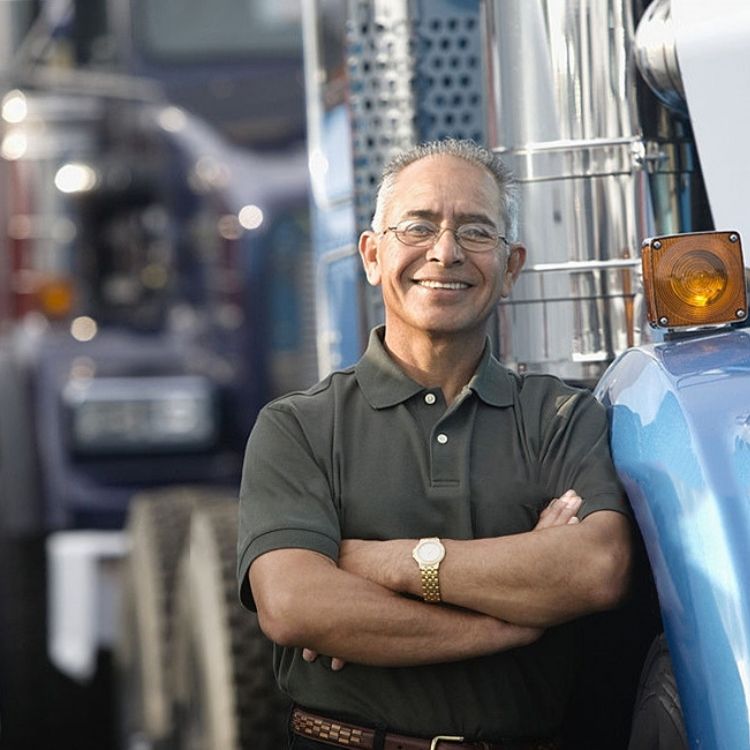Changes in the talent landscape, skills shortages and demographic shifts are making it harder than ever to recruit commercial drivers. Commercial truck drivers are among the hardest jobs to fill in the United States. A downward trend in the number of active candidates available and an increase in the overall number of job postings make for a difficult recruiting climate, according to a recent study by CareerBuilder. With employers competing for CDL candidates, these job-seekers can “drive” their relationship with organizations.
The Driver Talent Landscape
- More than 3.5 million people in America make their living as truck drivers, via American Trucking Associations (ATA) Trends.
- The average CDL candidate has six to 10 years of driving experience.
- The median pay for a truck driver in 2015 was just more than $40,000 a year, according to the Bureau of Labor Statistics.
- Trucking is the largest job in 29 states, according to The Guardian.
- Trucks will transport over 10 billion tons of freight in 2017, and that number is expected to increase in 2018, via ATA Trends.
- The trucking industry will need to hire nearly 900,000 drivers in the next decade to meet rising demand and cover for the aging workforce nearing retirement age.
- The average driver is 49-years-old, and retirement is driving much of the current turnover.
Truck Driver Shortage
The industry is currently facing a shortage of nearly 50,000 drivers, and that deficit is expected to grow in the coming years due to low numbers of qualified drivers, an aging workforce and overall industry turnover, according to the ATA Driver Shortage Analysis.That report states that trucking company representatives think attracting and retaining new driver talent is their most crucial strategic initiative, outweighing other issues like regulatory compliance, risk management and revenue growth.
The driver shortage is also due to the out of pocket costs of obtaining a CDL and the physical demands of the job. The local delivery driver position, in particular, is one that requires the employee to not only to drive a truck but physically unload and interact with customers. There is a decrease among millennials who are choosing to do labor-intensive work, so it’s more important than ever for organizations to consider how to attract this generation.
ATA also reports that between 2016 and 2027, the amount of freight moved by trucks is expected to increase by 27 percent. In fact, Fortune named truck drivers the most in-demand job in 2016. Meeting that demand while dealing with the current shortage won’t be an easy task. The ATA proposes a variety of solutions to help address the shortage, including increasing driver pay and offering sign-on bonuses, providing drivers more at-home time and catering to veterans.
Attracting a New Generation of CDL Drivers
The commercial driver landscape is further complicated by the fact that currently, the demand for commercial drivers is increasing as a significant portion of the CDL workforce is nearing retirement age. How can recruiters attract millennials to the industry as they watch the development of driverless cars? How can job hunters prepare themselves for the current CDL talent market and the future driverless talent market at the same time?
Companies that use CDL talent and the talent acquisition professionals focused on recruiting those drivers, must be focused on ways to attract millennials to these in-demand driving positions or risk getting left behind. Responses to traditional print media ads are declining, making it increasingly necessary to use social media, mobile and digital sourcing strategies to attract drivers who are on the road.
Trucks.com reports that more than a third of trucking companies are increasing investments in employee recruiting and improving their HR functions to help attract new talent and speed up the hiring and training process. Companies are also increasing their use of social media to promote open positions, partnering with local CDL schools to attract new graduates and working with the U.S. military to recruit veterans.
What’s Next? Self-Driving Trucks
Another thing affecting the industry is the self-driving car, with both Google and Uber regularly making the news for their tests and industry experts predicting they’ll be common and affordable by 2025.
The freight transportation industry needs to be prepared for the change because as the industry transforms, they need to find the candidates who can be successful in the shift. According to the LA Times, research has shown that artificial intelligence creates more roles for highly educated people. While the demand for drivers may go down, the search for candidates who can build and maintain driverless fleets will provide a new challenge.
Check out our fact sheet, Source the Right Commercial Drivers for Your Organization with PeopleScout, to learn how partnering with an experienced provider can help find the drivers you need in this competitive talent landscape.
Self-driving vehicles are one of the top seven trends impacting the talent acquisition industry. To learn more about how the technology could transform recruiting and to learn more about the other six trends, download our ebook: Seven Tech Trends Shaping the Talent Landscape.

![[Webinar] Smart Hiring in the AI Age: What UK Candidates Are Really Doing in 2025](https://www.peoplescout.com/wp-content/uploads/2025/05/AI-enable-applicant-report-320x320.jpg)
